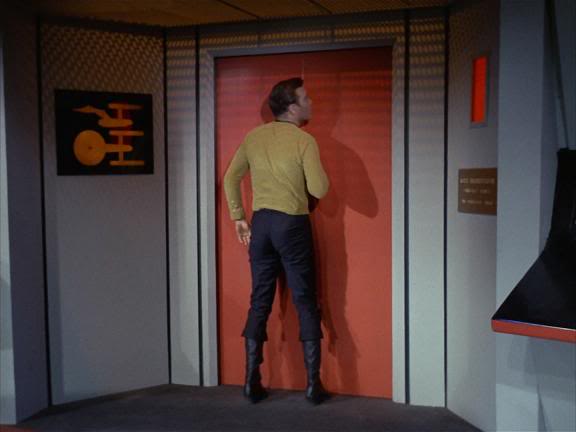The set designers for Star Trek built the turbolift doors to open at the push of a button. The idea was that Kirk would turn to exit the bridge, someone offstage pushes a button, gears and hydraulics spring into action, and whoosh! However, it was an unfortunately common occurrence that something would go wrong and the doors wouldn’t open on cue.
When they filmed Star Trek: The Next Generation, they solved the problem by simplifying the set design. Instead of doors that opened at the touch of a button, they had ropes with counterweights. It was much more reliable, and it let them have some much larger doors.
It’s the application of an age-old engineering principle: Go with the simplest thing that could possibly work.
We have this tendency to think that simple is flawed. It’s naïve. There’s no way it can possibly work. The proper solution has to handle this case, and that, and what if this happens? Sophisticated (read: complicated) plans have a greater chance of succeeding because all possible contingencies have been thought through and accounted for.
Yet they still get so much wrong.
Start simple. What is the most simple, most straightforward thing you could do? The more simple it is, the more likely you’ll do it.
Don’t worry about all the what-ifs and contingencies and everything that might possibly come up some day. Keep going that way, and you’ll end up with analysis paralysis. You’ll have so many complex and conflicting requirements swimming around your head that it’s no wonder you can’t think of what to do next.
The more complexity you add, the more points of failure you create. In trying to prevent failure, you’re making it easier to fail.
Simple is fast to implement. It’s inexpensive. It’s easy to delegate.
Complexity loves Parkinson’s Law. It will take over every hour, every dollar, every resource you throw at it. Then come back for more.
When simple doesn’t work, don’t go straight to complex. You want the simplest thing that could possibly work. You just ruled out one thing. It’s too simple, and now you know it won’t work. Try the next simplest thing.
When you need to add complexity, add just a little bit at a time. Just enough to make it work, no more. Make a change, see its effect. Change many things at once, and you won’t know what made the difference.
Sometimes this added complexity is temporary, or you only need it in some cases. I use the same birthday card project template whether I’ll deliver the card in person or by mail. I haven’t added the complexity of creating two different templates. Some day I probably will, but for now, it’s good enough.
Simplicity gives you more room to be flexible. Whatever the real problems are, you can respond to them appropriately. Life is complex enough without your help.
Question: What’s the simplest thing you can do today to make real progress? Share your thoughts in the comments, on Twitter, LinkedIn, or Facebook.

